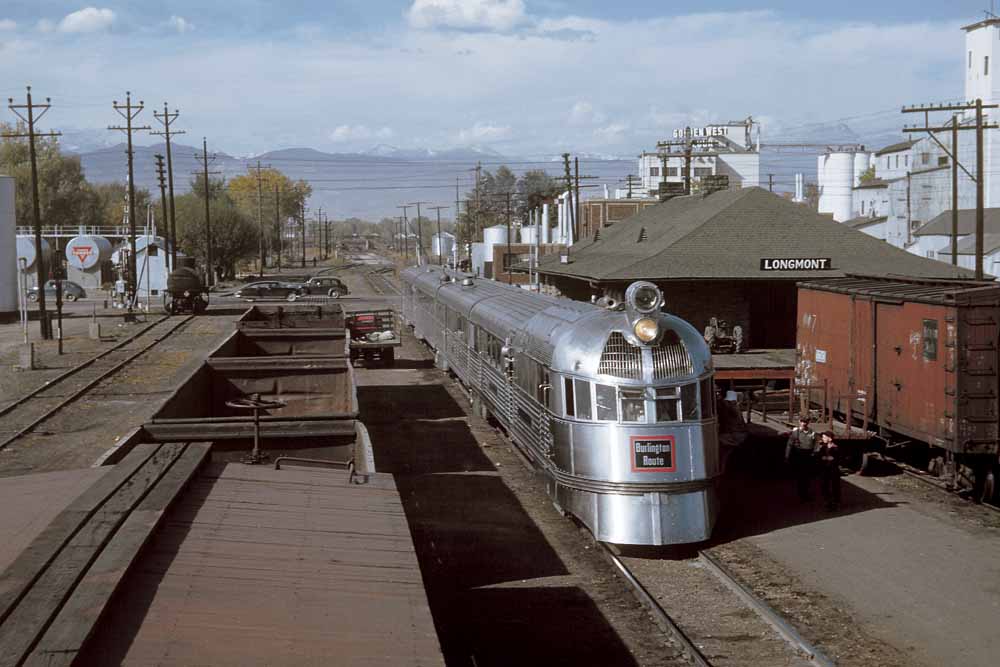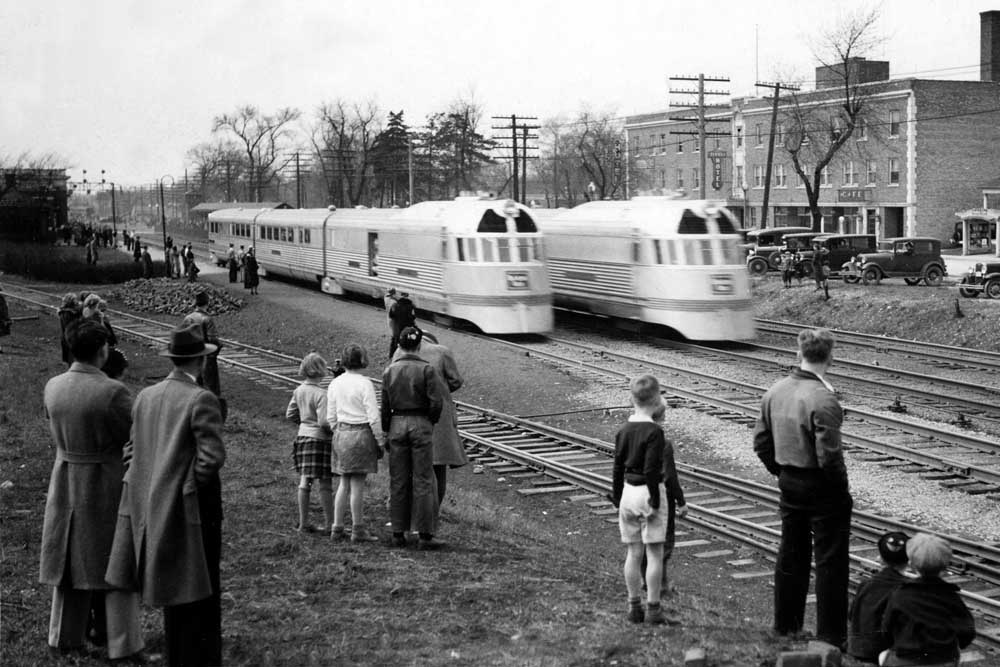Burlington Zephyr 9900 left a shiny legacy on North American railroading that’s still evident today.
Zephyr! It’s a name in the world of American passenger trains that dates from 1934 and is still in use by Amtrak. Its pronunciation even has a fast sound to it.
Let’s do what Classic Trains does best: turn back the clock, in this case to 1933-1934. Rivals Chicago, Burlington & Quincy and Union Pacific were competing to launch the two first true streamliners to speed their way into U.S. railroad history. UP won first place in Feb. 1934 with its three-car, riveted, smooth-side, yellow-and-brown M-10000. On April 18, 1934, CB&Q’s three-car, stainless-steel Zephyr 9900 was christened at Pennsylvania Railroad’s Broad Street Station in Philadelphia.

O.K., so if Burlington Zephyr 9900 was second place, why are we focusing on it here? Oh, let me count the ways. In the scope of North American passenger train developments, it truly earned first place. To wit:
- Zephyr 9900 was the first diesel-electric, internal-combustion-powered train that could operate at sustained high speeds.
- Built by the Edward G. Budd Co. in Philadelphia, Zephyr 9900 featured an advanced (and long-time patented) form of stainless-steel welding known as Shotwelding, considered unsurpassed in terms of strength, longevity, and appearance.
- The Zephyr’s timeless streamlined styling — with its iconic fluted stainless-steel car side –survives to this day. Think Amfleet, Superliners, and Viewliners, all of them either built by Budd or inspired by the company’s approach to stainless-steel construction.
- Train articulation was a breakthrough in which cars share trucks and thereby reduce train weight and stabilize ride quality. Good news and bad news here: Both the M-10000 and Zephyr 9900 were articulated trainsets that delivered smoother rides, but the fixed consists make it difficult to expand or contract train lengths to accommodate fluctuating ridership. That said, articulated trainsets are the rule today in frequent, high-speed train services. Think Amtrak’s Acela.
Before Zephyr 9900 entered regular service, it barnstormed the country in a grand, multi-month publicity tour, racking up 39,437 miles and going on display in 222 cities (including my hometown of Rockford, Ill., located on a dead-end CB&Q branch). During the tour, the 9900 was used in the RKO film The Silver Streak, but the train is probably best-known for its dawn-to-dusk, supposedly nonstop run between Denver and Chicago on May 26, 1934. (Rumor has it there was a secret fuel stop).
A key test run before Burlington Zephyr 9900 entered regular service occurred between Chicago and the Twin Cities of Minneapolis/St. Paul. The results were almost shocking, with Zephyr 9900 performing the run in nearly half the scheduled time of Burlington’s fastest steam-powered trains on the route. This prompted Burlington to order two more such trainsets, and in 1935 the Twin City Zephyrs — trainsets 9901 and 9902 — were born. (My ma made a trip during World War II on a packed-to-the-gills Twin City Zephyr between Oregon, Ill., and Minneapolis. She sat on her suitcase most of the way and said she was borderline “terrified” of the train’s terrific speed.)
Toward the end of 1934, Burlington Zephyr 9900 entered regular service between Kansas City, Omaha, and Lincoln. It made the 250-mile round-trip daily, replacing two money-losing, steam-powered, conventional trains and making the train profitable for the Q.

Burlington certainly took notice of this trend and quickly expanded its shovel-nosed Zephyr fleet to replace steam-powered runs, adding to its stainless-steel parade trainsets 9901 and 9902 in 1935 and tagging the name Pioneer Zephyr to the original Zephyr 9900. When it wasn’t assigned to a specific route, the Pioneer Zephyr became a promotional tool for new upcoming Zephyr routes. The train also occasionally substituted whenever a Zephyr trainset might be down for maintenance.
The slope-nose format for Zephyr power units ended in 1939 with the delivery of the General Pershing Zephyr. The design put locomotive crews in a dangerous position if there was a grade-crossing collision, one of which, in fact, smashed the nose of the 9900, killing the engine crew. Yup, the nose you see now on the Pioneer Zephyr is not original. The slope-nose look carried on with early Electro-Motive E-units, first introduced in 1939, but with cabs that sat above and back of the nose.
Alas, the Pioneer Zephyr made its last run in 1960, and Burlington donated it to Chicago’s famed Museum of Science & Industry, where it proudly stands today at one of the entrances. In the late 1990s, the museum dispatched its Pioneer Zephyr to Northern Rail Car in Milwaukee for a complete refurbishment, inside and out. Upon completion, it was rolled out of the shop in the same manner in which it rolled out of the Budd plant 63 years prior: with manpower, tethered to the head end, illustrating how lightweight the pocket streamliner was.
Aside from the original Zephyr now on display in Chicago, remnants of shovel-nose trainsets survive, including one built for Boston & Maine/Maine Central as the Flying Yankee, operating between Boston and Bangor, Maine. It is on display at Lincoln, N.H. The Mark Twain Zephyr recently was moved to the Wisconsin Great Northern Railroad at Trego, Wis. Well into the 1960s, Burlington’s Chicago-Omaha-Lincoln Nebraska Zephyr was protected by two original articulated Twin Zephyr sets, one of which remains in operation today at the Illinois Railway Museum, where it made a cameo appearance in the 1992 movie A League of Their Own.
And the Zephyr name rolls on, with Amtrak’s Illinois Zephyr (Chicago–Quincy, Ill.) and, of course, on one of the carrier’s most popular long-distance trains, the California Zephyr.













